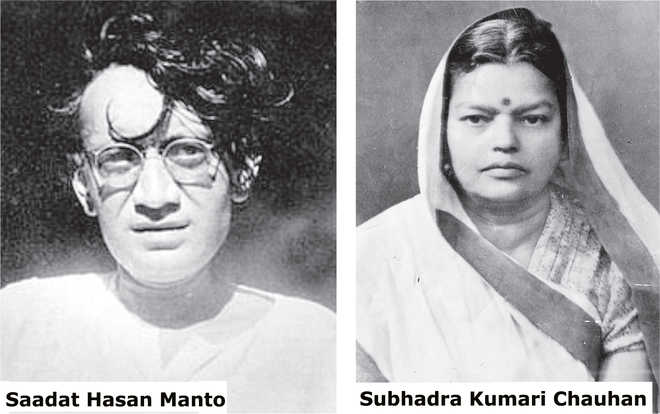
Sarika Sharma
A father tells his six-year-old there would be a tamasha near the house. The little child, scared of the planes flying overhead and wary of the closed shops outside, wants to go and see the tamasha. He hears the noise of crackers, sees a boy whimpering in the street below, blood oozing out of his leg and wonders how cruel would be the teacher who hit him. He wants God to teach the teacher a lesson.
Set in that evening, that bloody evening when the cries of freedom struggle renting the air were silenced by General Dyer’s bullets, Saadat Hasan Manto’s first-ever short story was about the Jallianwala Bagh massacre as seen by a child. Manto too was six when the tragedy struck and it had been igniting his imagination. It became this short story named Tamasha written around 1934. Like Manto, there were several others who wrote about the tragedy.
Works began to surface in public a year after the massacre. Poets started pouring their hearts out in poems, or qissas as they were known in common parlance. Dr Gurdev Singh Sidhu, who has edited several books on poetry written during the freedom movement, says in those days kavi darbars were the major medium of reaching out to the masses. Poems in response to the bloodbath were performed at such platforms, besides political meetings, and were published in newspapers and distributed as pamphlets.
The power of poetry and its instant connect with the masses — most of whom were illiterate or semi-literate — resulted in the banning of several poems with the first evidence of the move emerging in May 1920, according to Sidhu.
Punjab had recently been introduced to theatre and Kishan Chand Zeba, who was to later gain fame as a Parsi playwright, wrote a play on the massacre titled Zakhmi Punjab in early 1922. The British administration was quick to take note of its content and banned the play in May the same year.
We see some of these old works in a new book, Jallianwala Bagh — Literary Responses in Prose & Poetry, edited by Rakhshanda Jalil. It compiles works by Mulk Raj Anand, KA Abbas, Bhisham Sahni, Muhammad Iqbal, Subhadra Kumari Chauhan, Sarojini Naidu and Manto, to name a few.
So, 17 years after Tamasha, Manto was to write his more famous story on the subject, San 1919 Ki Ek Baat. His third on the tragedy was titled Deewana Shayar. While Tamasha is steeped in innocence, San 1919 Ki Ek Baat isn’t. It lays bare, in the writer’s characteristic style, the situation in all its ugliness. Manto’s niece, historian Ayesha Jalal, who has written about the two stories in her book, The Pity of Partition, says, “Tamasha shows how the Jallianwala Bagh massacre left a deep and lasting imprint on Manto’s mind. San 1919..., on the other hand, is a particularly powerful commentary on the hypocrisy of nationalism that extols the bravery of Thalia but condemns that of his sisters.” Thalia, son of a prostitute, had daringly faced the bullets of the British; his sisters (also prostitutes), after his death, had bared their bodies to the British but wished to spit on their faces before that.
A less spoken about work on Jallianwala Bagh is Bhisham Sahni’s Rang De Basanti Chola. Dinesh Kumar, a research fellow at Panjab University, says the common belief is that no full-fledged work has been done on the massacre in Hindi, but Sahni’s play is a powerful example. The three-act play is divided into 10 scenes and he points out that the only Hindi film on the subject, made by Gulzar in 1977, bears a striking resemblance to this play. Titled Jallianwala Bagh, it features Sahni’s brothers, actors Balraj Sahni and Parikshit Sahni.
The year 1919 was a turning point in the literary history of India, Jalil says in the introduction to her book. She says poets in different languages began to take up newer, more immediate concerns like never before. “Language became a means, not an end of a creative exercise.”
London-based poet Amarjit Chandan says, in literature, fiction always follows poetry. “English poet WH Auden famously remarked that poetry makes nothing happen. But in the case of Punjabi poetry, it moved millions — right from Pagri Sambhal agitation and Ghadar movement to Jallianwala Bagh and Gurdwara Reform Movement,” he says pointing out that after 1947, there was total alienation of literature from the masses.



























